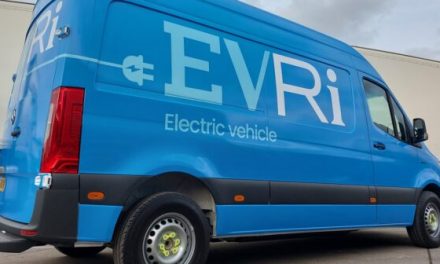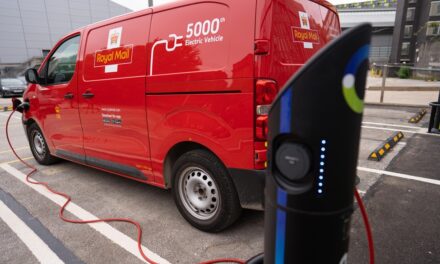
A Post’s Guide to Embracing Mobile

How far along are Posts with the adoption of mobile technologies in their day-to-day operations? What are their plans for mobile in the future? Where do the best opportunities for Posts lie? Eamon Kehoe, Marketing Manager at Escher discusses.
“When did you last walk into a bank to check your balance, pay a bill, or transfer funds? If you can’t remember, you’re not alone! Many people simply don’t need to visit their bank anymore, opting instead to do most of their banking online or via mobile. A recent Ipsos poll shows only 35% of customers visited their bank once a month or more, and there are countless other examples across multiple industries where in-person transactions are ceding to cost-effective mobile alternatives, with transactions that are faster and more convenient for the customer – two important components of creating great customer experience. Today, we live in an increasingly mobile-centric society, where there is an expectation for businesses to have mobile options for everything – from consumer to back-office apps to operations and beyond.
According to Escher’s latest Future of Posts 2023 survey, mobile is second only to e-commerce regarding its expected impact on the postal industry over the next five years. Currently, 38% of Posts equip postal carriers with mobile solutions to carry out transactions while on the go. Consumer mobile apps are another popular use case, with 38% of Posts offering them and another 13% leveraging in-store mobile solutions such as queue busters to help clerks and other staff carry out customer transactions while waiting in line. And over the next one to three years, 42% of Posts have plans to invest in mobile postman technologies, with 30% adding start-at-home, finish-in-branch solutions for customers, with one in six Posts planning for in-store mobile options.
No boundaries: The mobile-first post office
Adopting mobile technology presents one of the strongest business cases when a physical post office is not feasible, whether due to war, challenging geographic terrains, or sparsely populated rural areas. In such scenarios, the solution is to bring the post office directly to the people; mobile technology serves as the means to accomplish this. Wireless network coverage has improved tremendously over the past decade, and the introduction of satellite internet service means we’re that much closer to ubiquitous wireless connectivity across the globe. In the digital economy, where customers expect to interact using a personal mobile device, adding services to mobile should be manageable. Banking, shopping, and hailing a ride are all areas where mobile technologies are common. A postal operator’s mobile app can provide many services typically offered by a Post. Customers can initiate postal transactions from their smartphones just like other digital services. In certain situations, like shipping a parcel, customers can start the transaction online using their phone and finalize it at a physical location.
In addition to the customer experience benefits of providing mobile services, Posts should also be mindful of the cost benefits of adopting mobile technologies. Not only can it be inconvenient for customers to visit the post office for every transaction, but the concept of “mobilizing” services that can be accessed through mobile devices and collaborating with third-party retailers for any necessary physical interactions can be highly appealing as this set up can dramatically lower fixed costs.
Accelerate New Services with Mobile
Like in banking, mobile technology can accelerate the adoption of new financial services for Posts. And with 40% of postal operators reporting a negative impact on revenues this past year, primarily attributable to a decline in parcel volumes (The Future of Posts, 2023), adding a more diversified mix of predictable services, like banking services, maybe a good strategy for Posts looking to insulate themselves from loses in other areas that are less predictable or have fallen foul of external extenuating circumstances. According to the Future of Posts, many Posts may already be thinking about this, with 39% indicating they will include financial services in their mobile channel. Given that approximately 75% of Posts provide financial services, the mobile channel presents a compelling opportunity for Posts to attract and retain customers in the long run.
As postal operators are generally considered trustworthy and possess one of the most extensive and stable customer bases, adding financial services makes a lot of sense. Some of the top financial services that Posts currently offer include money orders, bill payments, international remittances, government benefits, payments, and domestic remittances. Insurance, although not currently provided by many Posts, is also a lucrative service to add, and like all the other services mentioned, could be offered via a number of channels, including mobile.
The Mobile Postman
Postal operators possess a substantial workforce of letter and parcel delivery personnel who cover all delivery points within their network, whether on foot or using vehicles. With the right backend systems, Posts can extend postal transactions and services to any location. These services can also be accessible on handheld devices the delivery personnel use. As a result, postal transactions are no longer limited to the confines of the post office as a range of services provided by physical post offices are now available on the go through the existing postal delivery personnel. And as mentioned, 42% of Posts plan to invest in the mobile postman POS channel over the next three years, which will provide greater convenience to the customer, and should lead to higher adoption of postal services and increased customer loyalty.
Modernization Through Mobile
Introducing a mobile offering oftentimes necessitates a digital transformation or modernization of systems. When planned effectively, this presents an incredible opportunity for Posts to explore broader ideas and strategies that may not have been feasible with previous legacy systems. Consider the comprehensive process of digital transformation for Posts, which could entail updating core IT systems and software, enhancing retail and delivery networks through the addition of more PUDO locations and smart lockers, expanding POS channels, incorporating self-service options, investing in data and analytics, leveraging AI and machine learning for improved speed and agility, integrating OCR technology, implementing track, trace, and last-mile delivery solutions, as well as adopting intelligent dispatch and dynamic route optimization. Such a digital transformation significantly enhances the quality of mobile solutions for postal operators and consumers.
According to the Future of Posts 2023, postal operators intend to incorporate mobile services for various purposes such as cash distribution (e.g., pensions), returns payments and collections, identity verification, and additional financial services. However, the expansion of mobile offerings extends beyond consumer services. As indicated by the same survey, route optimization has emerged as the top service that Posts plan to incorporate into their mobile offerings. Delivery teams are expected to leverage route optimization to improve speed, accuracy, and efficiency, with mobile technology playing a vital role in making these plans a reality.
In short, digital transformation enables Posts to improve operational efficiency by automating processes and simplifying workflows, benefiting internal operations and customers. This reduction in unnecessary complexity allows Posts to prioritize enhancing the customer experience and drive innovation. Mobile technology plays a significant role in any digital transformation effort. While only some postal services can be offered through mobile, establishing a modern, digitized retail and delivery network makes it highly feasible for Posts to find ways to make almost anything possible.
Mobile technology will continue transforming the post office. Through mobile technology, it becomes feasible to extend services beyond the physical post office, empower postal carriers and drivers with enhanced tools and resources, and drive additional revenue. The future of the mobile-first post office is exciting, where mobile technology brings new possibilities and simplifies processes for postal operators and customers.
Download your complimentary copy of Escher’s Future of Posts 2023.











